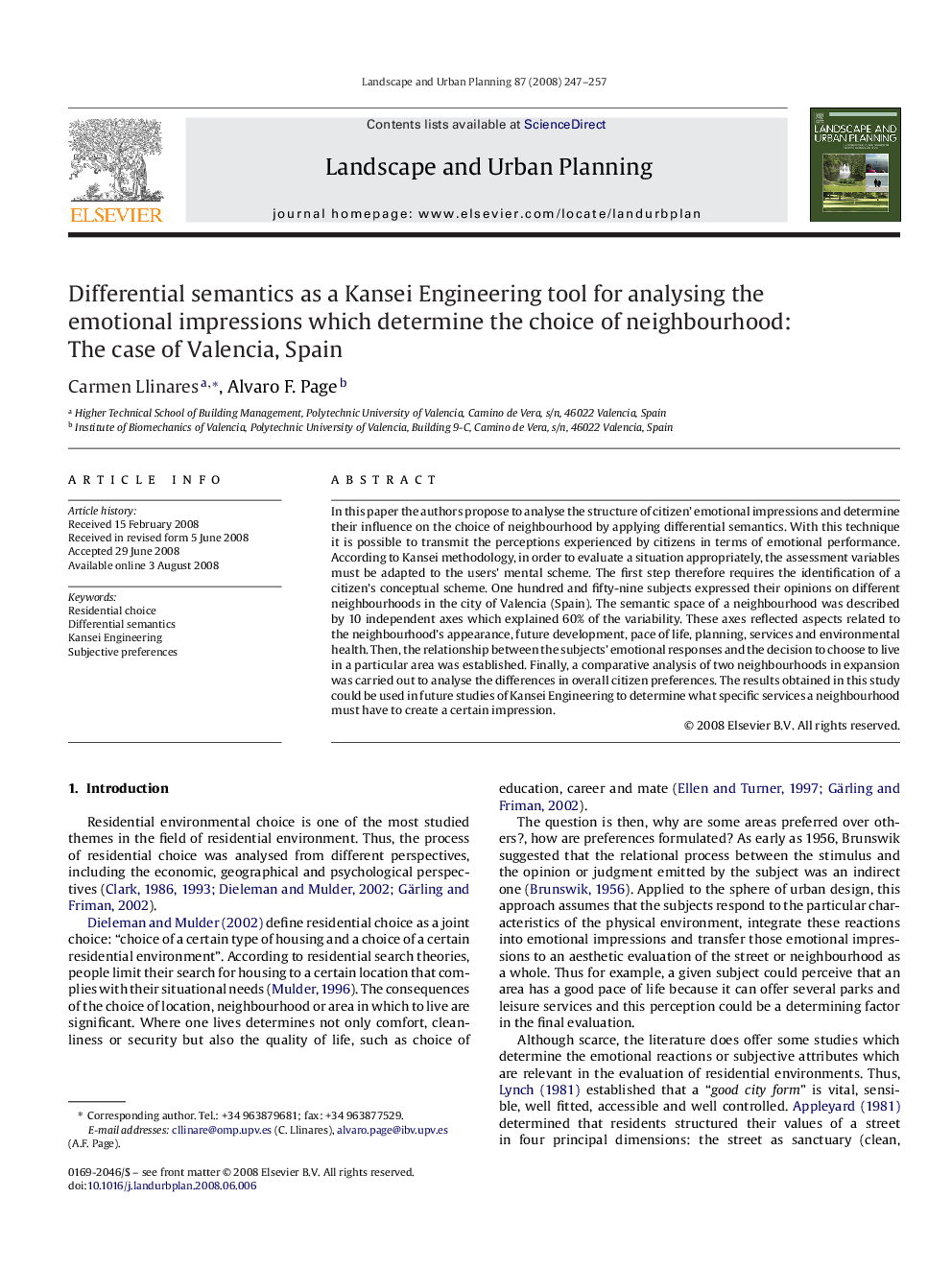| Article ID | Journal | Published Year | Pages | File Type |
|---|---|---|---|---|
| 1049985 | Landscape and Urban Planning | 2008 | 11 Pages |
In this paper the authors propose to analyse the structure of citizen’ emotional impressions and determine their influence on the choice of neighbourhood by applying differential semantics. With this technique it is possible to transmit the perceptions experienced by citizens in terms of emotional performance. According to Kansei methodology, in order to evaluate a situation appropriately, the assessment variables must be adapted to the users’ mental scheme. The first step therefore requires the identification of a citizen's conceptual scheme. One hundred and fifty-nine subjects expressed their opinions on different neighbourhoods in the city of Valencia (Spain). The semantic space of a neighbourhood was described by 10 independent axes which explained 60% of the variability. These axes reflected aspects related to the neighbourhood's appearance, future development, pace of life, planning, services and environmental health. Then, the relationship between the subjects’ emotional responses and the decision to choose to live in a particular area was established. Finally, a comparative analysis of two neighbourhoods in expansion was carried out to analyse the differences in overall citizen preferences. The results obtained in this study could be used in future studies of Kansei Engineering to determine what specific services a neighbourhood must have to create a certain impression.
